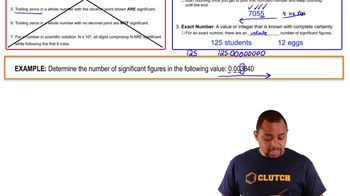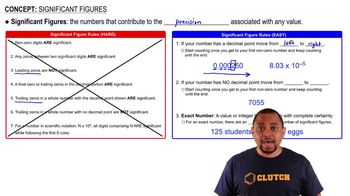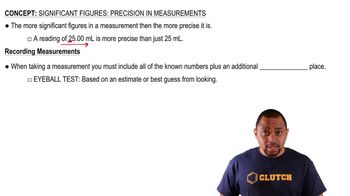Here are the essential concepts you must grasp in order to answer the question correctly.
Significant Figures
Significant figures are the digits in a number that contribute to its precision. This includes all non-zero digits, any zeros between significant digits, and trailing zeros in the decimal portion. Understanding significant figures is crucial for accurately reporting measurements and ensuring that calculations reflect the precision of the data.
Recommended video:
Significant Figures Example
Rules for Counting Significant Figures
There are specific rules for determining the number of significant figures in a measurement. Non-zero digits are always significant, zeros between significant digits are significant, and leading zeros are not. Trailing zeros in a decimal number are significant, while those in a whole number without a decimal point are ambiguous. These rules help in maintaining consistency in scientific communication.
Recommended video:
Significant Figures Rules
Precision vs. Accuracy
Precision refers to the consistency of repeated measurements, while accuracy indicates how close a measurement is to the true value. In the context of significant figures, a measurement with more significant figures is generally considered more precise. Understanding the distinction between these two concepts is essential for interpreting data and assessing the reliability of measurements.
Recommended video:
Significant Figures Precision




